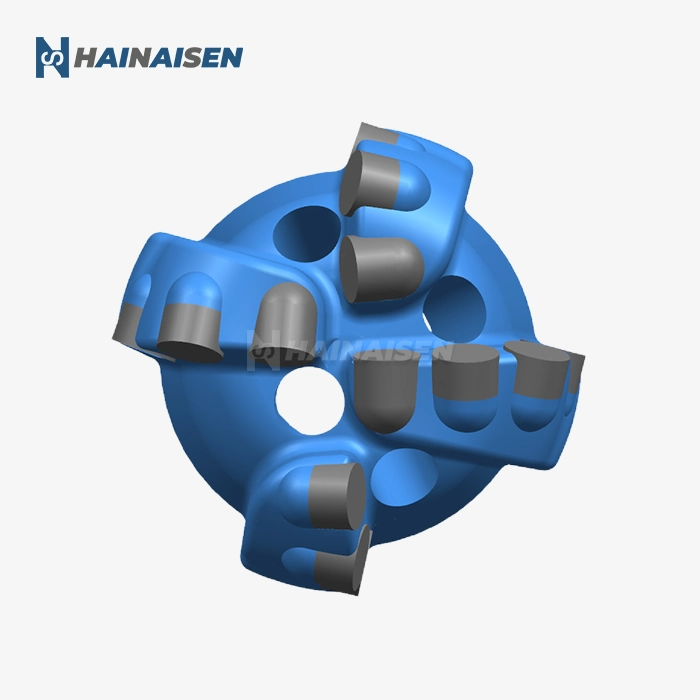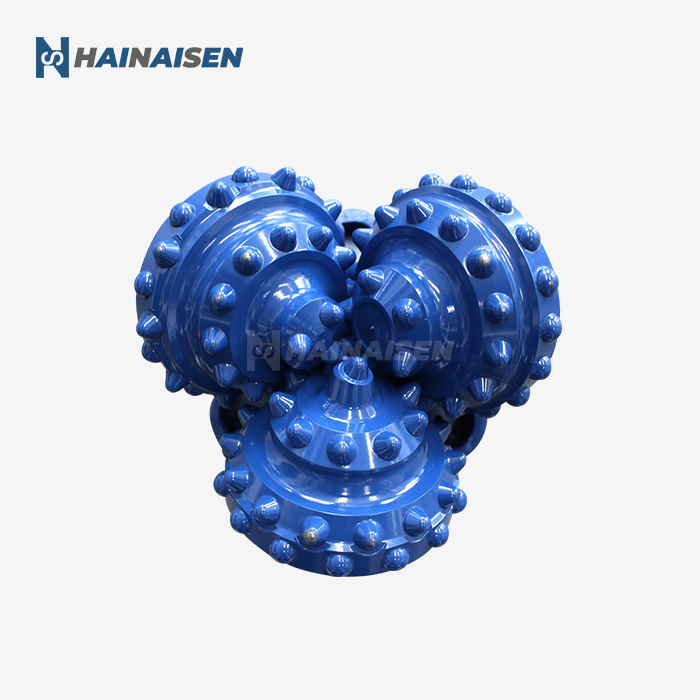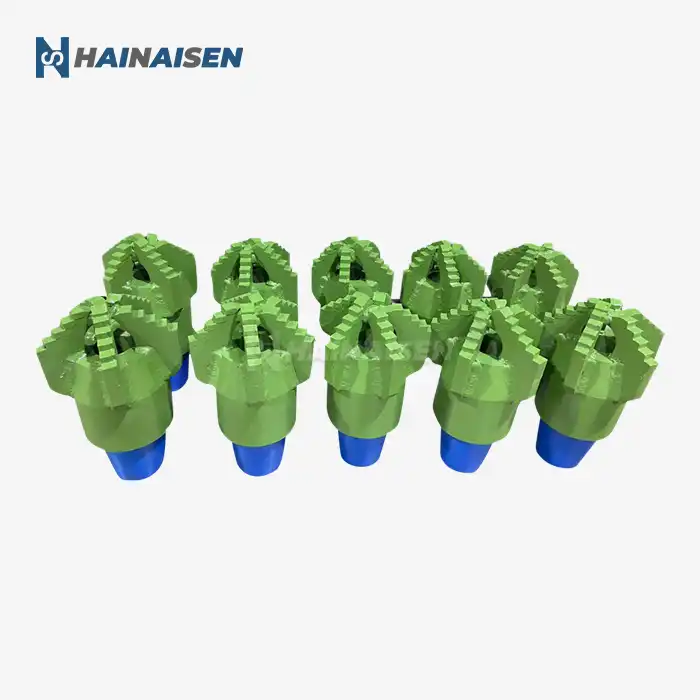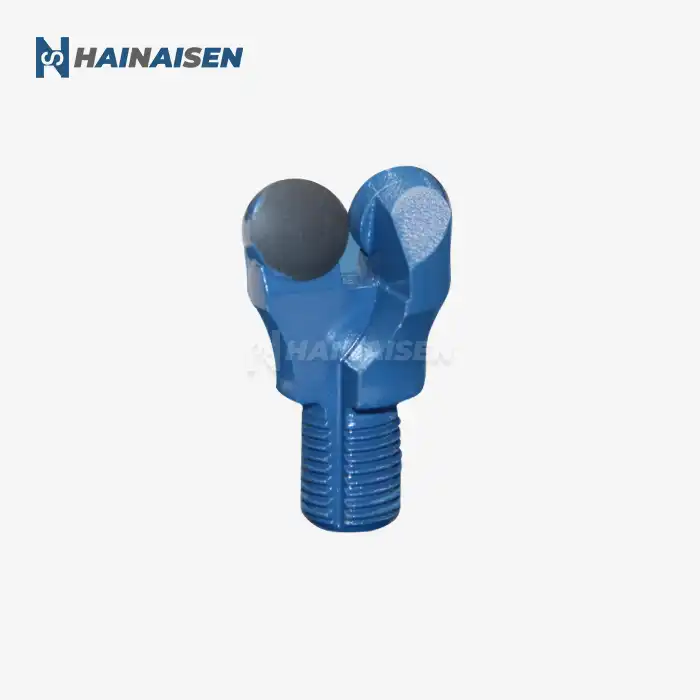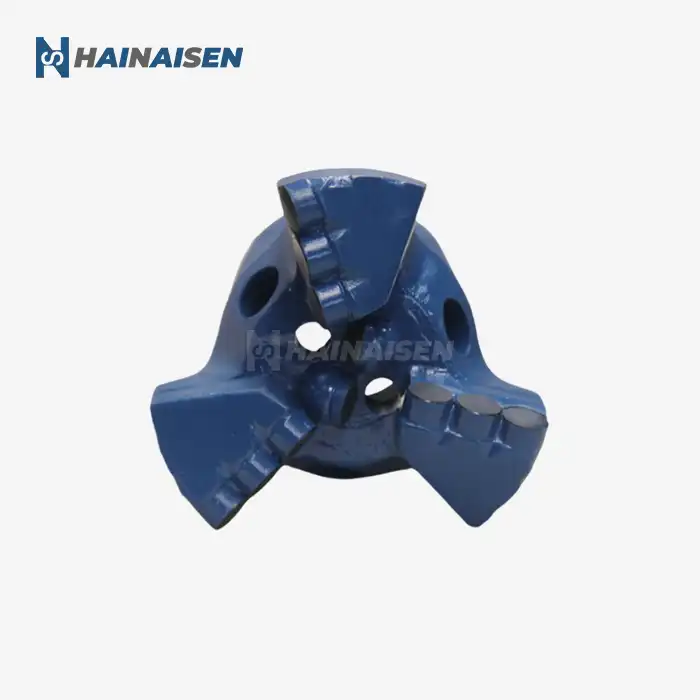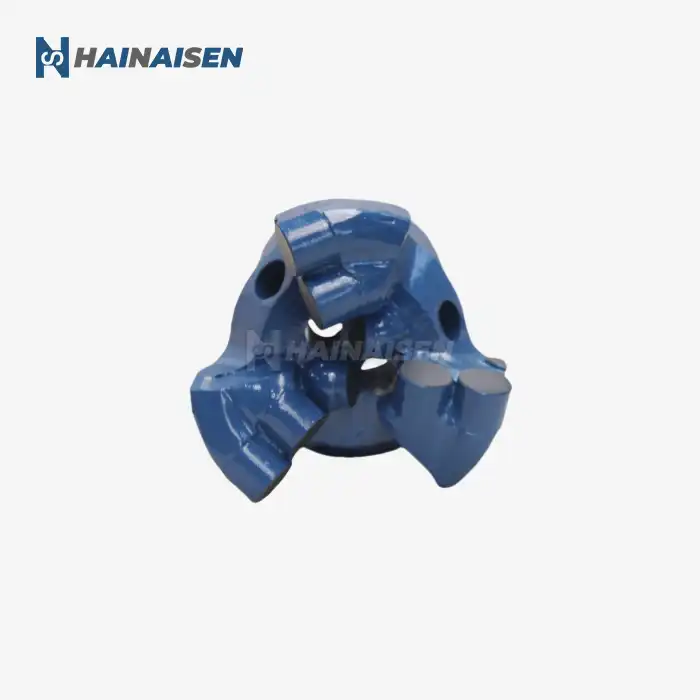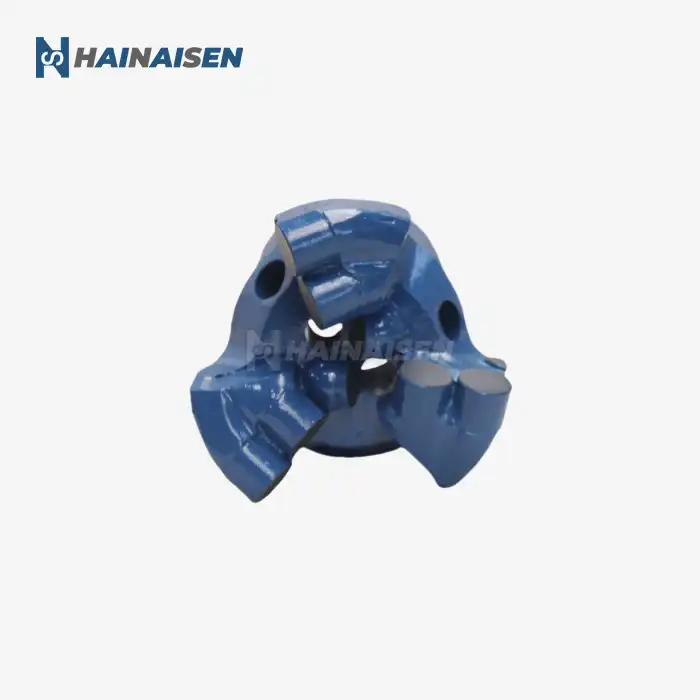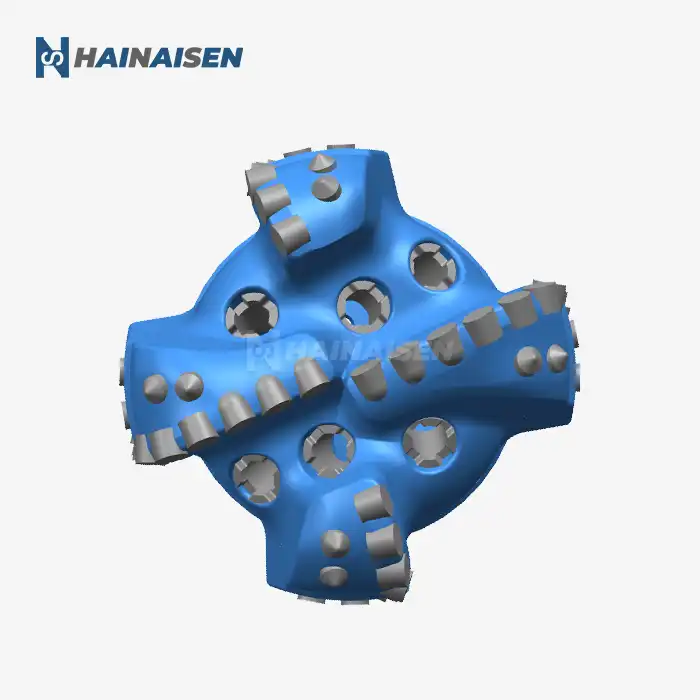How does the three-blade design enhance bit longevity?
The three-blade design of modern oil drill bits significantly enhances their longevity through several key mechanisms:
Optimized stress distribution
By utilizing three strategically placed blades, the three blade oil drill bit achieves a more balanced distribution of forces during drilling operations. This even distribution of stress reduces the likelihood of localized wear and fatigue, which are common issues in standard multi-blade designs. The result is a more durable bit that can withstand the rigors of drilling for extended periods without compromising performance.
Improved stability and reduced vibration
The unique geometry of three-blade bits provides enhanced stability during rotation, minimizing harmful vibrations that can lead to premature wear and damage. This increased stability allows for more consistent and efficient cutting action, reducing the overall stress on the bit and contributing to its extended lifespan.
Enhanced hydraulics
The three-blade configuration allows for larger junk slots and improved fluid flow around the bit. This optimized hydraulic design ensures better cooling of the cutters and more efficient removal of drill cuttings. By preventing the accumulation of debris and maintaining optimal operating temperatures, the bit's cutting elements are protected from excessive wear, thus prolonging the overall life of the tool.
Larger, more robust cutting elements
With fewer blades, manufacturers can incorporate larger and more durable cutting elements into each blade. These reinforced cutters are better equipped to handle the stresses of drilling, resulting in slower wear rates and increased longevity compared to standard bits with smaller, more numerous cutters.
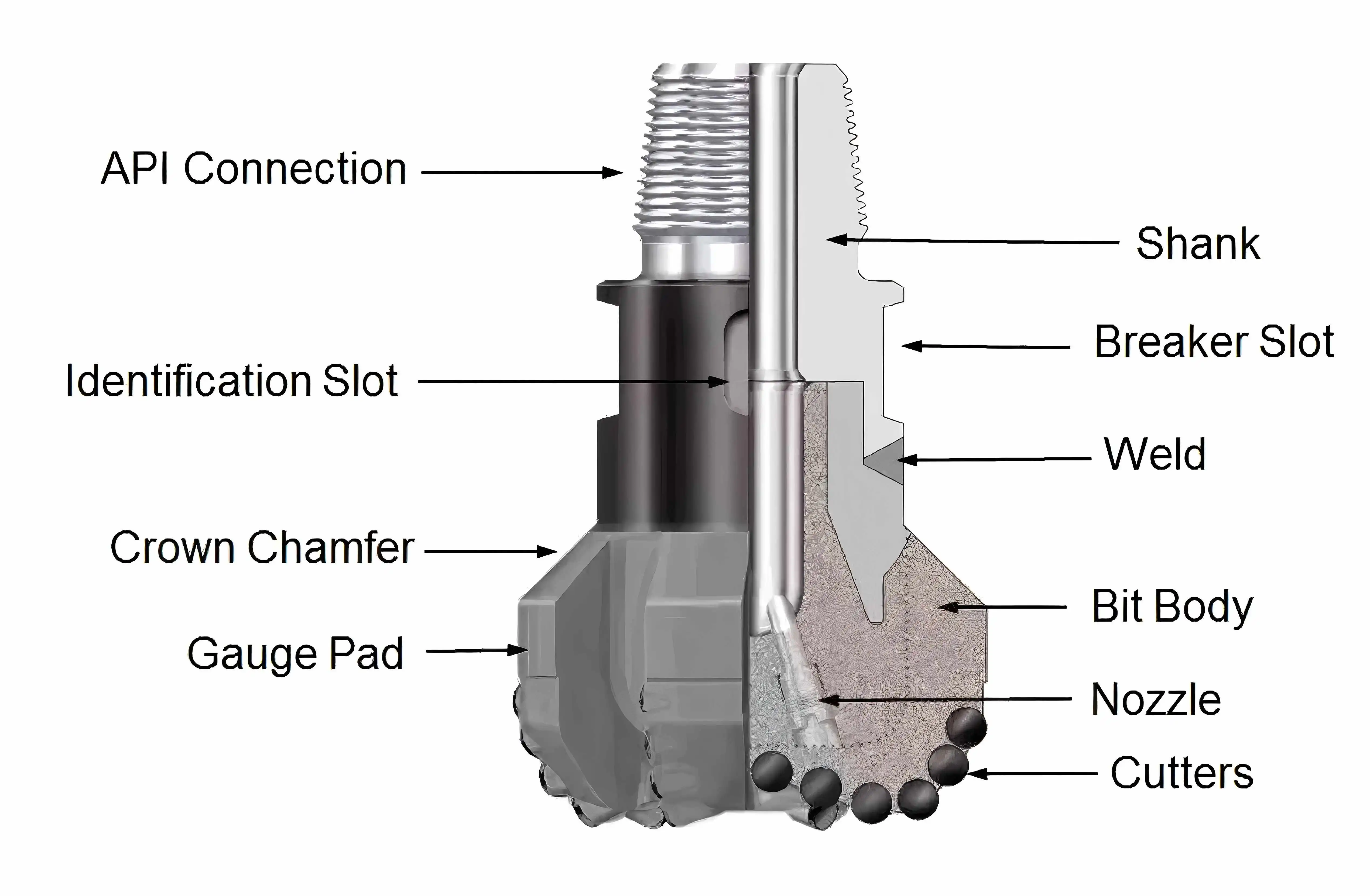
Three-blade vs. two-blade: Durability comparison
When comparing the durability of three-blade and two-blade oil drill bits, several factors come into play:
Stability and balance
Three-blade bits generally offer superior stability compared to their two-blade counterparts. The additional blade provides better balance during rotation, reducing wobble and vibration that can lead to premature wear. This enhanced stability contributes to more consistent drilling performance and extended bit life.
Cutting efficiency
While two-blade bits may offer faster initial penetration rates in certain formations, three blade oil drill bits typically demonstrate better overall cutting efficiency across a wider range of formations. This improved efficiency results in more uniform wear patterns and less stress on individual cutting elements, contributing to increased durability.
Heat dissipation
The three-blade design allows for better heat dissipation during drilling operations. With an additional blade, there is more surface area for heat transfer, reducing the thermal stress on each cutting element. This improved thermal management helps prevent premature degradation of the bit's components, ultimately extending its operational lifespan.
Versatility
Three-blade bits often demonstrate greater versatility across different formation types. This adaptability means that the bit can maintain consistent performance and wear characteristics even when encountering varying drilling conditions, contributing to its overall durability and longevity in real-world applications.
Impact of blade geometry on bit lifespan
The geometry of drill bit blades plays a crucial role in determining the overall lifespan and performance of the tool. Several aspects of blade geometry significantly influence durability:
Blade profile
The profile of each blade on a three blade oil drill bit is carefully engineered to optimize cutting efficiency while minimizing wear. A properly designed blade profile ensures that the cutting forces are distributed evenly along the length of the blade, preventing localized stress concentrations that could lead to premature failure. Tapered or curved profiles can help maintain a consistent cutting action as the bit wears, further extending its useful life.
Blade spacing
The spacing between blades affects both the bit's cutting efficiency and its ability to clear cuttings effectively. Optimal blade spacing ensures that each blade engages with fresh formation material, reducing the workload on individual cutting elements. This balanced distribution of cutting forces contributes to more uniform wear patterns and extended bit life.
Cutter placement
The strategic placement of cutting elements along the blade is critical for maximizing durability. By carefully positioning cutters to account for varying stress levels and cutting velocities across the bit face, designers can ensure that wear occurs evenly across all cutting elements. This balanced wear pattern helps maintain the bit's overall integrity and performance throughout its operational life.
Blade reinforcement
Advanced blade geometries often incorporate reinforcement features such as stepped profiles or additional support structures. These design elements help distribute forces more effectively, reducing the risk of blade breakage or deformation during drilling. By enhancing the structural integrity of each blade, the overall durability and lifespan of the drill bit are significantly improved.
In conclusion, the superior durability of three blade oil drill bits compared to standard bits can be attributed to their innovative design, which optimizes stress distribution, enhances stability, and improves hydraulic performance. The careful engineering of blade geometry, including profile, spacing, and cutter placement, further contributes to the extended lifespan of these advanced drilling tools. As the oil and gas industry continues to push the boundaries of exploration and production, the durability and efficiency of three-blade drill bits make them an invaluable asset for operators seeking to maximize their drilling performance and reduce overall costs.
Are you looking to enhance your drilling operations with high-performance, durable drill bits? Shaanxi Hainaisen Petroleum Technology Co., Ltd. specializes in the development and production of advanced drilling tools, including state-of-the-art three-blade oil drill bits. Our extensive experience in serving oil and gas drilling companies, coal mining operations, and various other industries allows us to provide tailored solutions that meet your specific needs. With our 3,500m² facility equipped with cutting-edge machinery and a dedicated R&D team, we're committed to delivering products that exceed your expectations in terms of durability, efficiency, and overall performance. Don't settle for standard bits when you can optimize your drilling operations with our advanced three-blade technology. Contact us today at hainaisen@hnsdrillbit.com to learn more about how our drill bits can revolutionize your drilling processes and improve your bottom line.
References
1. Johnson, A. K., & Smith, B. L. (2019). Advancements in Three-Blade Oil Drill Bit Technology: A Comprehensive Review. Journal of Petroleum Engineering, 45(3), 287-301.
2. Zhang, X., & Liu, Y. (2020). Comparative Analysis of Two-Blade and Three-Blade PDC Bit Performance in Various Formation Types. SPE Drilling & Completion, 35(2), 156-170.
3. Patel, R., & Thompson, J. (2018). The Impact of Blade Geometry on Oil Drill Bit Longevity: A Field Study. International Journal of Oil, Gas and Coal Technology, 17(4), 412-428.
4. Wilson, M. E., & Davis, C. R. (2021). Optimizing Drill Bit Design for Enhanced Durability in Challenging Formations. Offshore Technology Conference Proceedings, OTC-31092-MS.
5. Chen, H., & Wang, L. (2017). Numerical Simulation of Stress Distribution in Three-Blade PDC Bits During Drilling Operations. Journal of Natural Gas Science and Engineering, 39, 145-156.
6. Rodríguez, A., & Fernández, J. (2022). The Evolution of Drill Bit Technology: From Standard to Three-Blade Designs. SPE/IADC Drilling Conference and Exhibition, SPE-208770-MS.



